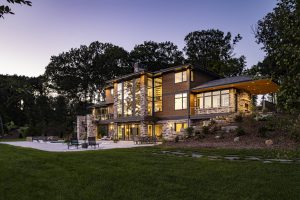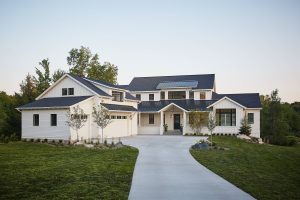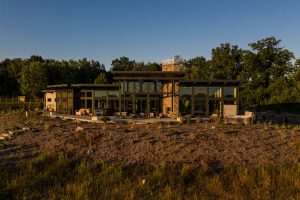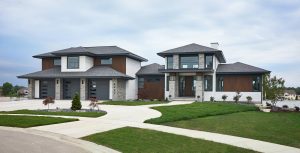SPECIALTIES
Classic & Traditional Home Design
Traditional residential architecture has remained a tried and true staple for over 100 years in American architectural circles, and for good reason. Alongside classic home architecture, they’re enjoying a resurgence as more people find ways to make their mark on their houses. At 42º North, we’re thrilled to see them continuing to make a mark on the American homeowner.
Discover what makes these two design styles similar—and what makes them distinct from each other.
What Are the Differences Between Traditional & Classic Residential Architecture?
Although some people use the two terms interchangeably, there are some differences between traditional and classic architecture and home design. Traditional home architecture tends to be slightly simpler than its classic counterpart, but it also focuses more on creating a feeling of warmth and hospitality. In short, it’s a simpler design style that tends to focus on making a house feel like a home, rather than a museum full of antiquities or the halls of Versailles.
The classical style, however, is prized for its timelessness. While it is more ornate, it often uses references to past movements with more flexibility for a stately air in every part of the home—both inside and out.
In short, classic and traditional residential architects borrow elements from similar sources. However, traditional home architecture is simpler and designed for comfort, while classic home architecture is more ornate and elaborate.
Classic Home Architecture Elements
Greco-Roman Columns
Classic home floor plans regularly use columns on the front facade of the house. Whether they’re simpler Tuscan or Doric-style designs or more elaborate Corinthian or composite styles, columns are a recognizable feature in classical style homes. Designers most often use them to add dimension and support to porches.
Ornate Exterior Trim
Another hallmark of classic home design plans is the use of ornate decorative exterior trim and molding. Back in the day, these used to be status symbols that showed the homeowner was wealthy enough to not only have a gigantic house, but also cover it in beaded rails and running trim.
While more modern takes on classic architecture have taken a more subdued approach to exterior decoration, you’ll still find elements of it to this day. It comes in the form of geometric molding that follows the general lines and curves of the house.
Transom Windows
These are the smaller windows that go above doors or other, larger windows. Since the classic architecture style emphasizes having separate rooms for different purposes, transom windows make sense in these traditional home layouts because they allow more natural light into all corners of the house.
Built-In Furniture
If you’ve ever toured an older home or a house with heavy classic inspiration, you may have noticed that some of the furniture was built directly into the interior architecture. Built-in furniture and fixtures are another hallmark of classic architecture.
However, the exact type of built-in furniture you’ll find depends on personal preference. Some home designers still prefer incorporating a built-in hutch to dining areas, while others are more inclined to add built-in benches and coat hooks near the front or side door. The only real limit is the imagination.
Our Classic & Traditional Home Design Plans
We’ve developed luxury home designs for homes throughout Michigan in an array of styles. These are just a few of our favorite high-end residential homes we’ve designed over the years.
Traditional Architecture Characteristics
Symmetrical Layout
Traditional architecture captures several different eras throughout American history, including colonial, federalist, Georgian, and others. One of the common threads with all three of these and others from America’s early days is the use of symmetry, both inside and outside the house.
The symmetrical layouts of traditional architecture provide balance and unity. While symmetry is a less common feature in newer traditional houses, there are still elements of it present—particularly in common areas inside the home.
Gabled Roofs
Steeply pitched roofs with front-facing gables are a common element in traditional homes. Back in the day, they used to be a popular design choice because they more easily allow snow and rain to drain off the roof.
However, even as drainage systems have gotten better, new traditional homes still use gables as a more economical way to ventilate the house, keeping the lower levels cool in the summer and allowing heat to rise to the sleeping areas in the winter.
Separate Rooms
Before the rise of the open floor plan in Prairie and modern homes, it was common for traditional homes to have separate rooms for different purposes within the house. This is still common with traditional homes, which will often separate out formal dining areas from the kitchen, living room, and sitting rooms.
In keeping with the original purpose of the closed floor plan, these rooms often have doors between them for additional privacy or to block out noise as needed.
Mixed Material Usage
While traditional home designs tend to be simpler than their classic counterparts, they don’t shy away from using multiple building materials. It’s common to see new traditional homes still utilize materials like brick and wood on the same building. Plaster, stone, and stucco are also common elements.
Why Make 42º North Your Traditional Home Design Partner?
Our Custom Home Designs
Whether you have a traditional, classic, or a hybrid Tudor-contemporary in mind, your home should match everything you and your family need—down to having a dedicated place to put your phone.
Our customhouse floor plans reflect everything you want or need from your home. No idea is too “out there” for us. As long as it complies with local building codes, we can design it.
We’re Not Like Traditional Architects
Which is to say, we’re not stuffy. We started our own design firm to get away from those types of pretentious architects.
Since we’re designing the space where you’ll spend most of your life, we want to make sure your home has everything you need and looks exactly like the house of your dreams. We value friendliness and listening skills above everything else, and we consider ourselves design agnostic—so we won’t railroad you into a style just because we’re good at it.
Our Design Process at a Glance
Whether you’re having us work on a traditional, classic, or modern house, or anything in between, here’s what you can expect the process for our traditional architectural design services to look like at a glance:

Connect With Us
Looking for a traditional residential architecture firm near you? Let’s chat! We want to get to know you first. Expect to sit for a coffee with us so we can learn about your vision before we get started.
Share your vision
Our most important design tools aren’t our hands—they’re our ears. We’ll learn about your current space through questionnaires and observations—including what you love and hate about this space, and what you like most about different classic or traditional homes you’ve visited.

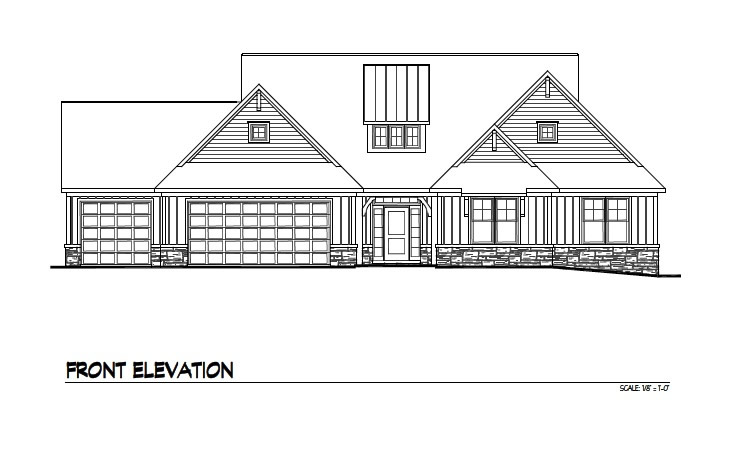
Give Us a Tour
We’ll see your current space for ourselves when we take a home tour with you. This gives us a chance to see the ergonomics, spatial relations, and scale of the home in person so we can design your new home accordingly.
Watch Us Work
We use cutting-edge architectural CAD software to give you an exact visual of what your home will look like, down to the flowers you’ll have in the front yard.

Make Us Your Consultant
We still stay in touch after you sign off on your new home design! Expect us to be in the loop with you during construction and even after you get the keys.
Turn Your New Home Into a Timeless Classic
Ready to make those visions of your dream home a reality? Connect with us to get started and make us your home design partners.

